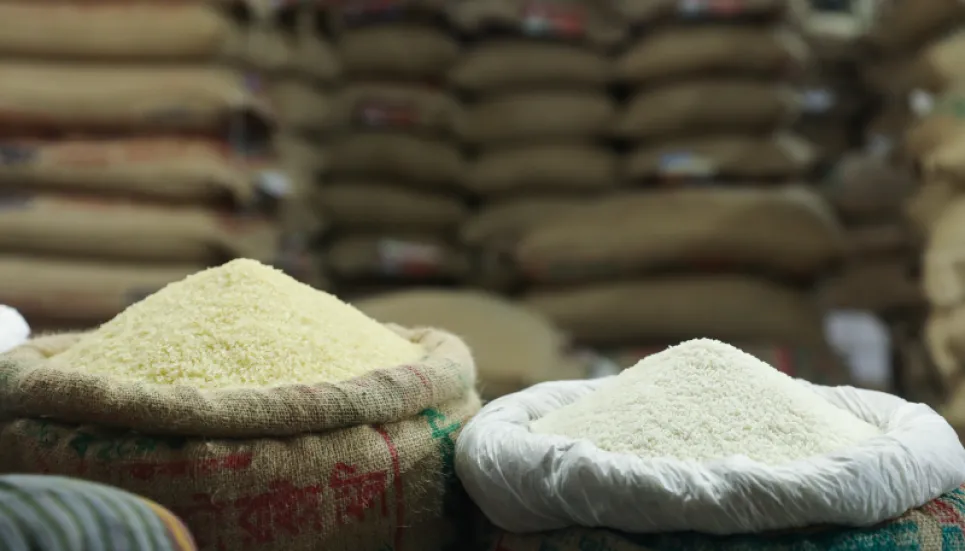Home ›› 05 Feb 2022 ›› News

Bangladesh currently has more than 20 lakh tonnes of foodgrain in stock, enough to meet 20 days of local demand.
But with Aman rice procurement slated to continue throughout this month despite meeting the target on Feb 2, food ministry officials say they fear there will be space shortage in warehouses. This could potentially damage the stored foodgrain and hamper the upcoming Boro procurement.
Of the current reserves, 16.76 lakh tonnes are rice and 2.95 lakh tonnes of wheat, food ministry data show. The government planned to procure 5 lakh tonnes of aman rice and 3 lakh tonnes of aman paddy in the current season. But it has already procured 5.59 lakh tonnes of rice and 0.6 lakh tonnes of paddy till Feb 2.
A food ministry official said they could not increase Open Market Sale (OMS) for the lack of allocation, but another official said they would initiate a programme to sell per kilogram rice at Tk 10 to five million families. Each family will be allowed to purchase 30kg of rice at a time.
“It will start from March,” the official said, adding, “We also increased OMS areas to support low-income people and free up warehouse before the Boro season.”
Rice prices still high
Rice prices in the local market are still high, with a kg coarse rice selling at Tk 44-48. Besides, BIRI-28 costs Tk 52-55 and the finer variety Tk 65-70.
Asked about the high prices despite buoyant reserves, food Secretary Mosammat Nazmanara Khanum said it was true that the finer variety cost a little higher compared to the last couple of years.
“The problem is we have a reserve capacity of only 22 lakh tonnes. If we fail to release a minimum of 6 lakh MT within June, we won’t have enough space for Boro stock,” she said.
Record import despite record production
In 2021, Bangladesh produced a record amount of rice, but it also imported a record amount of the staple compared to the last two decades.
Around 3.86 crore MT of rice was produced, while 22 lakh MT was imported.
In FY18, rice import was 31.65 lakh MT between October and February.
In November 2020, the government stocks dropped to 6 lakh MT, pushing rice prices up in the local market. To rein in the price, the government went for import.